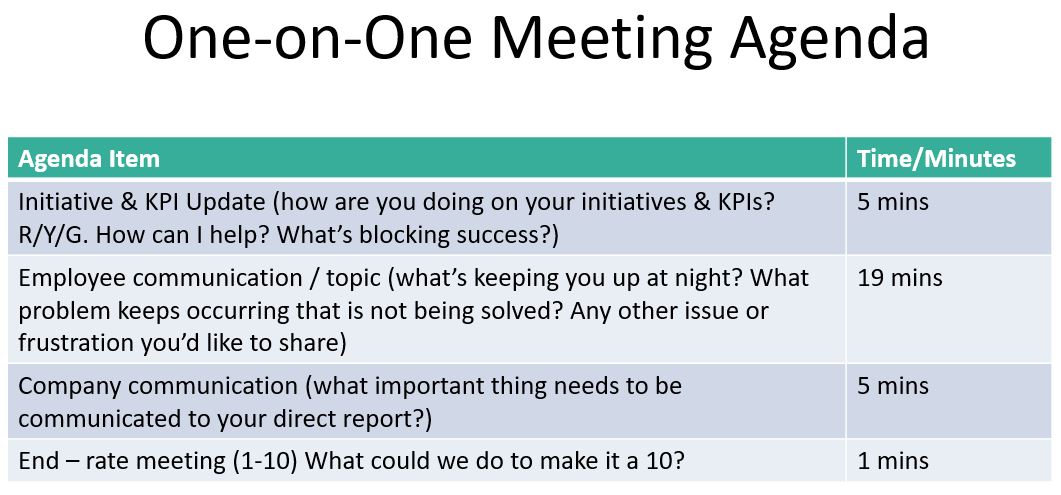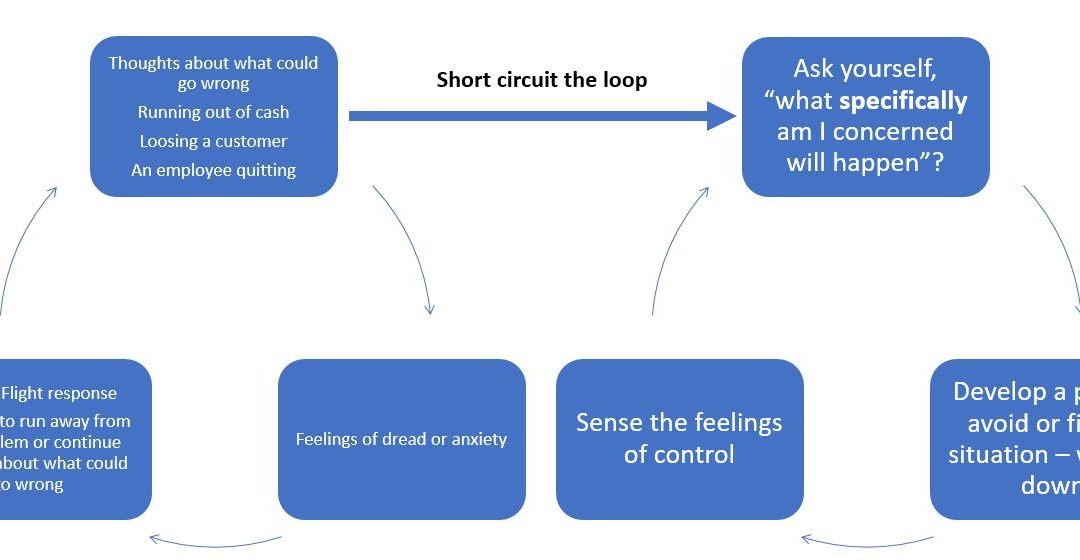I’ve blogged about small business meetings before.
Meeting on a regular basis with your employees is a critical mechanism for reducing your stress and creating a profitable business. One-on-one meetings can be one of your greatest tools for improving performance. A lack of communication can be one of the biggest profit leaks in your business.
There is also a significant external dynamic happening today. According to the Harvard Business Review blog , there is a performance management “revolution” happening.
Companies are changing the way they manage employees. Many are moving away from the annual review process toward more frequent check-ins where feedback can be given and received. According to the Harvard Business Review article, “Employers are finally acknowledging that both supervisors and subordinates despise the appraisal process—a perennial problem that feels more urgent now that the labor market is picking up and concerns about retention have returned.”
A tightening job market is making hiring and retention a major problem for small businesses and the process of providing feedback is seen as a major component for driving retention.
In this blog post I want to focus on a specific type of meeting that many small business owners struggle with, the one-on-one meeting.
Whether you have 100 employees or 5, regularly scheduled one-on-one meetings between a manager and a direct report should be a major priority for your small business. One-on-ones are a critical communication mechanism to help to avoid misunderstanding, improve employee morale (engagement) and reduce high turnover.
I would put this management practice under the category of “preventative” management. It’s like the preventative maintenance of your home. The longer you wait to do the maintenance, the more it could cost you.
Once you decide that you are going to implement this practice, there are a number of questions which surround HOW to actually pull it off ? What exactly do you do? What should you talk about? When should you meet? How do you provide feedback? I’ll attempt to go through each of these questions.
Who Should Attend The One-on-One Meeting?
Your organization chart should be your guide here. Each employee should have one supervisor or manager. That supervisor or manager should meet with their direct reports (those employees they are directly managing). I know this sounds pretty basic, but I have been surprised at the number of companies that do not have a clear organizational structure. Your first hurdle may be getting a clear organizational structure in place. If your organizational structure is not clear, meaning you can’t draw an unambiguous organizational chart, read this blog post for help.
Often, fear keeps business owners from developing a clear organizational chart. The fear of offending, or fear of holding others accountable prevents small owners from making these decisions. I’ve seen owners give a title to an employee, just to make them happy, though the title made no sense. Just imagine what would happen to the army if clear reporting lines were not established. Chaos. If your company feels chaotic and people don’t know who they report to, this may be the reason.
Where Should The One-on-One Meeting Be Held?
Since you may be speaking about sensitive subjects (we’ll get to that in a minute), you should find a quiet area to meet (like your subordinate’s office) or your office. It should be free of distractions so you can focus on the task at hand, listening to your direct report. Put away your cell phone and give your undivided attention to each other.
What Items Should The One-on-One Meeting Agenda Include? How Long Should The One-on-One Meeting Be?
We suggest the following meeting agenda

Feel free to adjust this agenda, but you’ll notice the vast majority of the agenda revolves around allowing your direct report to share with you their concerns. What is keeping them up at night? This is your opportunity to really listen to your employee and head-off problems and misunderstandings. Without solid communication in place, rumors can start and cause damage.
There is also a small amount of time where you can communicate to the employee any company communications you feel are important.
Lastly, you want to chat about the key results that the employee is responsible for generating. I like to think of these results in two categories:
KPIs (Key Performance Indicators)
I’ve written about KPIs before. A KPI is a “Key Performance Indicator”. KPIs translate an employee’s key responsibilities into something measurable.
Let’s use sales as an example. If one of a salesperson’s key responsibilities is to generate income, you probably want to measure “income” or “revenue” as a KPI. Revenue would be a “lagging” KPI which means it’s measuring something that has already happened. You may also want to measure a “leading” KPI which would measure an activity which drives income, like “Number of sales meetings” (sales meetings lead to revenue). The point being, you need to map each of an employee’s key responsibilities to a KPI which clearly indicates if the employee has been successful in fulfilling their key responsibilities.
Initiatives
According to Google, an initiative is “an act or strategy intended to resolve a difficulty or improve a situation“. Initiatives should align with the overall company goals. We suggest sharing the company goals with each employee and asking them to determine at least one initiative per quarter.
How Often Should We Hold One-on-One Meetings?
A quick search on Quora surfaced answers anywhere from weekly to monthly. We suggest meeting bi-weekly at a minimum. Meetings need to be scheduled at the same time and location and if at all possible only canceled in an emergency. Employees need to be able to rely on this communication mechanism.
Please use the comment section below to share your experience with one-on-one meetings.\
Need help getting started with one-on-ones with your employees? We can help. Just click on the button below.
{{cta(‘ee96bafa-95b9-4d6d-83ed-9a175c78aae5’)}}
